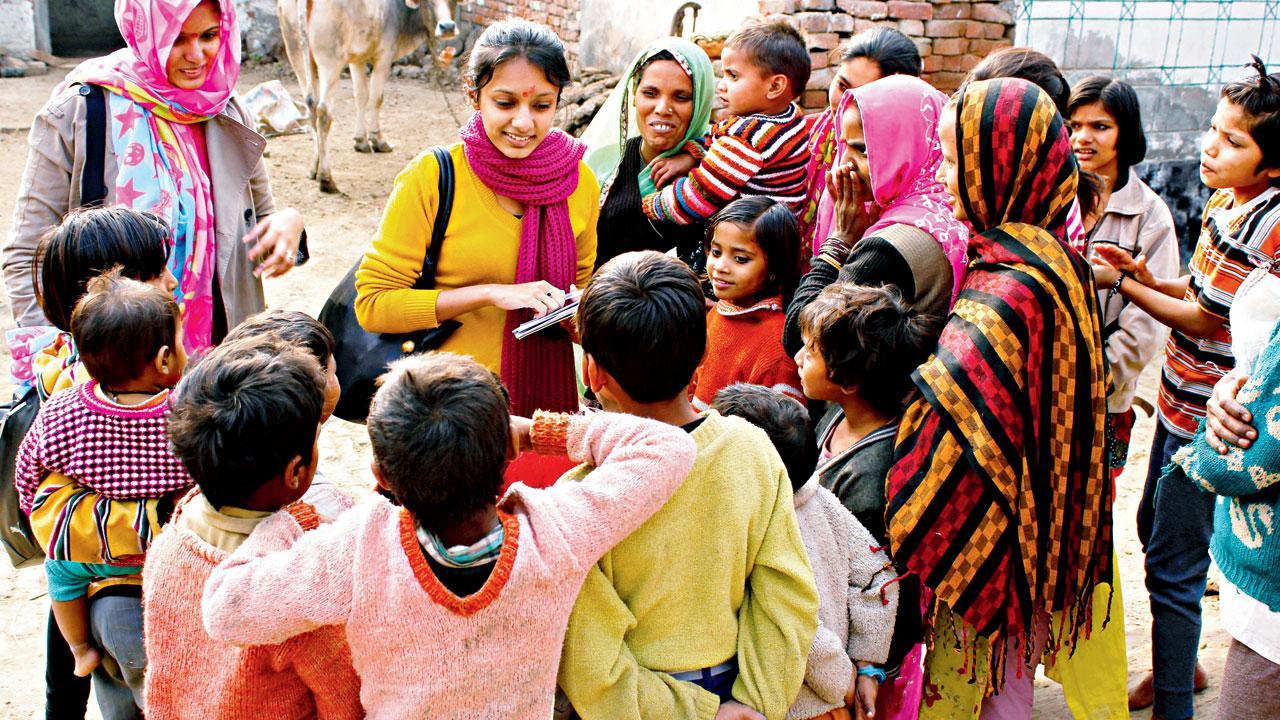Conflicting interests of regions, political alliances and social groups have had the crucial survey acquire a thick layer of political moss as it is extremely difficult to evolve a consensus over it

Due in 2021, the decennial Census was postponed because of the COVID pandemic and, subsequently, for unfathomable reasons. Representation Pic
 When the ruling National Democratic Alliance and the Opposition failed to agree even on a name for the Lok Sabha speaker, it is moot whether they can evolve a consensus over more contentious issues such as the timing of the Census and its nature. Due in 2021, the decennial Census was postponed because of the COVID pandemic and, subsequently, for unfathomable reasons.
When the ruling National Democratic Alliance and the Opposition failed to agree even on a name for the Lok Sabha speaker, it is moot whether they can evolve a consensus over more contentious issues such as the timing of the Census and its nature. Due in 2021, the decennial Census was postponed because of the COVID pandemic and, subsequently, for unfathomable reasons.
The Census, with time, has acquired a thick layer of political moss, so to speak. For one, it is linked to carrying out delimitation, which involves allocating Lok Sabha seats to each state in proportion to its share in the country’s population, and to the implementation of 33 per cent women’s reservation in legislatures. For another, there is now a pressing demand that the Census should also count the population of castes.
ADVERTISEMENT
But first, the need for delimitation and its history. Delimitation is undertaken to ensure that the ratio between the Lok Sabha seats of each state and its population is the same for all states. This ratio can be maintained only through delimitation, for the population of states keeps changing, tracked every 10 years through the Census. Delimitation, ideally, must follow every Census.
But delimitation last happened in 1973, based on the 1971 population data. Thereafter, it was put on hold through the 42nd Constitutional Amendment Act, 1976. It said the next delimitation will take place only after the 2001 Census. The logic was that the states notching successes in reducing their population growth rate should not have their presence and clout in the Lok Sabha diminished.
This logic, by 2001, acquired strong political overtones. Since the states constituting the Hindi heartland had witnessed a higher population growth than those in south India, delimitation in 2001 would have increased their already high representation in the Lok Sabha even further. And the balance of power would have got even more skewed against the southern states, which had recorded lower population growth rates since the 1971 Census.
In order to obviate the north-south divide, delimitation was yet again postponed through the 84th Constitutional Amendment Act, which said the exercise should remain frozen until the first Census after 2026. Had the 2021 Census not been delayed, the first one after 2026 would have been in 2031, following which the allocation of seats to states would have been due. If the Census were to now take place in 2025, the first Census after 2026 may even be in 2035–and delimitation thereafter.
The above timeline shows delimitation is still a decade away. But could it not be brought forward? Yes, argued academic-activist Jean Drèze in a recent article, pointing out that the Bharatiya Janata Party’s motive behind delaying the 2021 Census might be to hold it after 2026, enabling the party to carry out delimitation before the 2029 Lok Sabha elections.
The fear of 2001 will undoubtedly reemerge: delimitation will aggravate the north-south divide over representation in the Lok Sabha. This danger the BJP might be tempted to ignore, for, unlike in 2001, it now has a formidable presence in north Indian states and can, despite the reverses in the recent Lok Sabha elections, enhance its electoral dominance.
The BJP appears invested in delimitation, for the anticipated increase in the number of MPs after 2026 was often, albeit unofficially, cited as one of the reasons for constructing the new Parliament building. Again, the BJP linked, through the 106th Amendment, the implementation of 33 per cent reservation for women in legislatures to a delimitation exercise undertaken on the basis of the first Census after 2023.
The first step towards conducting the Census is freezing the administrative boundaries of districts, tehsils, towns, etc. The last deadline to freeze the boundaries was extended for the ninth time six months ago, and it expired yesterday, June 30. Any further extension will fuel speculation about the BJP’s intent.
The Opposition’s demand to count caste has also turned the Census into a hot potato. It campaigned vociferously on this issue in the recent Lok Sabha elections—and reaped a rich harvest of votes. The Scheduled Castes and the Scheduled Tribes have always been counted in the Censuses. It is primarily the Other Backward Classes who are keen to know their percentage in the population. They have, for long, wanted their reservation quota to match their population share.
But this cannot be done without removing the 50 per cent cap on reservation. Such a measure will shrink the proportion, if not the actual number, of jobs and seats in educational institutes available for socially and educationally advanced groups, primarily the upper castes, who are the BJP’s steadfast supporters. A caste Census will, therefore, give a fillip to competition among castes and deepen caste identities, which the BJP seeks to subsume into the larger Hindu religious identity, the cornerstone of Hindutva philosophy. It is for this reason the BJP will not want to count the population of castes.
Conflicting interests of regions, political alliances and social groups make it inordinately difficult to evolve a consensus over the Census. This is compounded by the BJP’s propensity to disregard the Opposition’s opinions. This is a tragedy, for the Census is needed for providing subsidies to teeming millions who remain uncounted and out of official records.
The writer is a senior journalist and author of Bhima Koregaon: Challenging Caste.
Send your feedback to mailbag@mid-day.com
The views expressed in this column are the individual’s and don’t represent those of the paper.
 Subscribe today by clicking the link and stay updated with the latest news!" Click here!
Subscribe today by clicking the link and stay updated with the latest news!" Click here!








